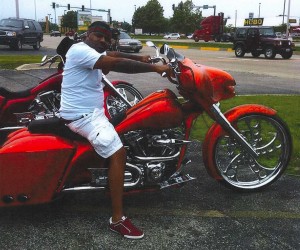
A heroin supplier who prosecutors say wielded violence to protect his drug empire and flaunted his riches with a lavish lifestyle was sentenced to 37 years in prison Thursday by a federal judge who found him responsible for the slaying of an informant.
After two days of evidence and arguments, U.S. District Judge Harry Leinenweber held David Price responsible for shooting a longtime friend in front of the man’s 3-year-old daughter for cooperating with the feds.
Price had been convicted more than three years ago on 13 counts of money laundering, conspiracy and weapons counts.
In seeking life in prison, prosecutors had argued that Price should be held responsible for killing longtime friend Gregory Holden after Holden helped out authorities — an allegation Price was not charged with or convicted on.
On Thursday, Leinenweber concluded that Price was indeed responsible by a preponderance of the evidence — a lower standard of proof than the beyond a reasonable doubt that a jury must find to convict.
But given that Price was not convicted of the murder, the judge rejected life in prison, saying he thought that was “a little too much.”
Leinenweber said he chose 37 years in prison so Price, 38, wouldn’t be freed from prison until he was an older man.
After the hearing, Price’s attorney, Beau Brindley, said he would appeal the conviction and sentence. He said there was “not sufficient evidence” to find Price responsible of “a murder of any kind.”
Price’s father, who testified against his son but had questioned prosecutors’ attempt to portray him as a murderer, declined to comment.
“He ain’t no kingpin,” his father told the Tribune on Wednesday.
Federal prosecutors said Price’s body tells the story of his life — from the tattoo covering his face that says “Neighborhood Bully” to the pictures of his children tattooed on his back just above the tat showing him with guns blazing in each hand, plus the words “God Forgives, I Don’t.”
He lived by those words, prosecutors allege, shooting Holden, ordering hits on other “rats” and even threatening to kill his own father when he refused to continue to launder drug money.
Price, nicknamed “Shorty” and “Hot Sauce,” acted ruthlessly to protect a lucrative drug empire that supplied heroin to open-air drug markets on Chicago’s West Side for seven years, prosecutors said.
The profits enabled Price to live lavishly, buying luxury homes, including a downtown high-rise apartment; driving a Corvette and a custom Harley-Davidson motorcycle; and owning a $35,000 watch encrusted with more than 1,000 diamonds, according to prosecutors. Price even named his son after Louis Vuitton, his favorite luxury clothing brand, authorities said. Read More…




 The continuing rise of overdose deaths in New York and Massachusetts underscores the need for access to effective drug rehab for opioid addicts.
The continuing rise of overdose deaths in New York and Massachusetts underscores the need for access to effective drug rehab for opioid addicts.